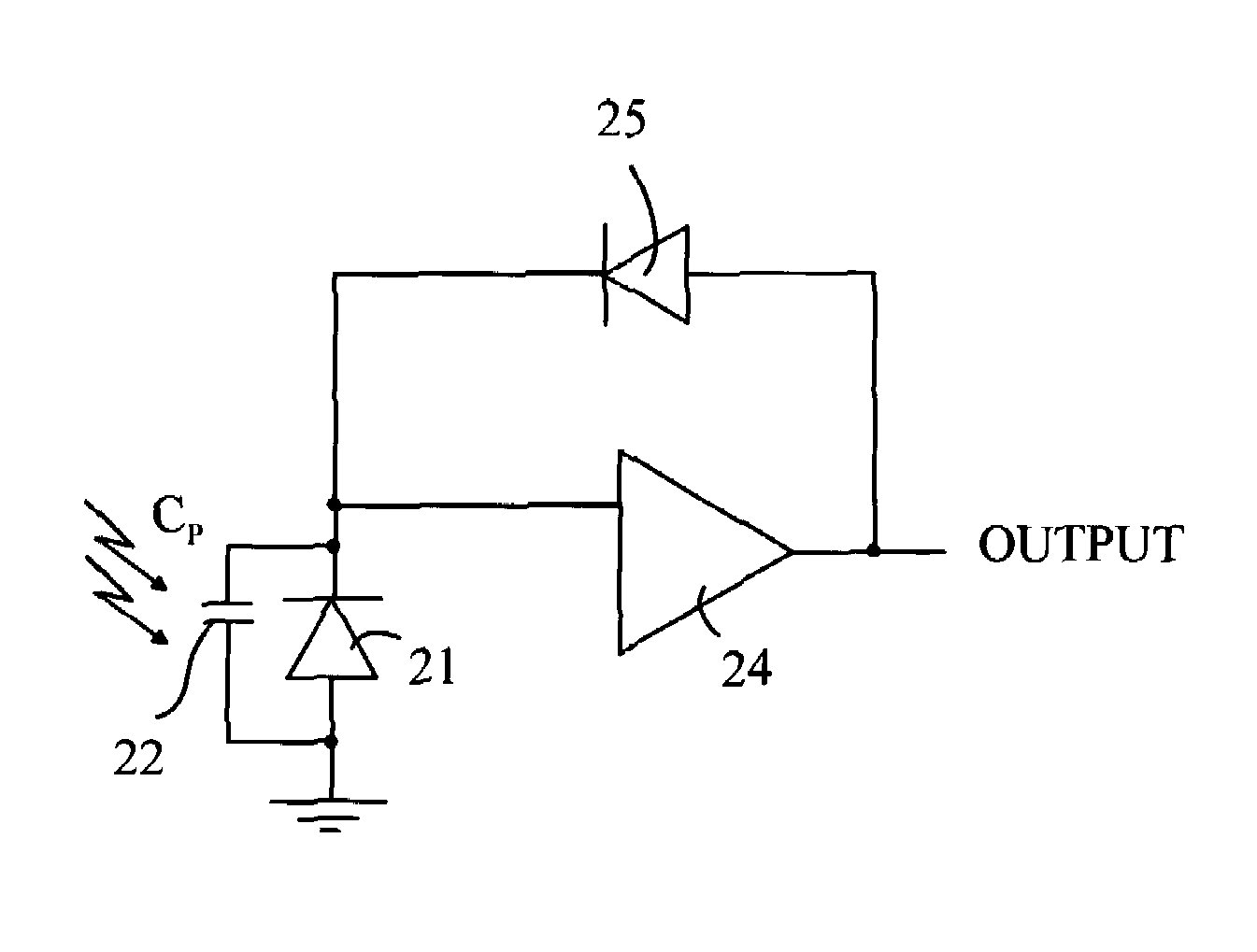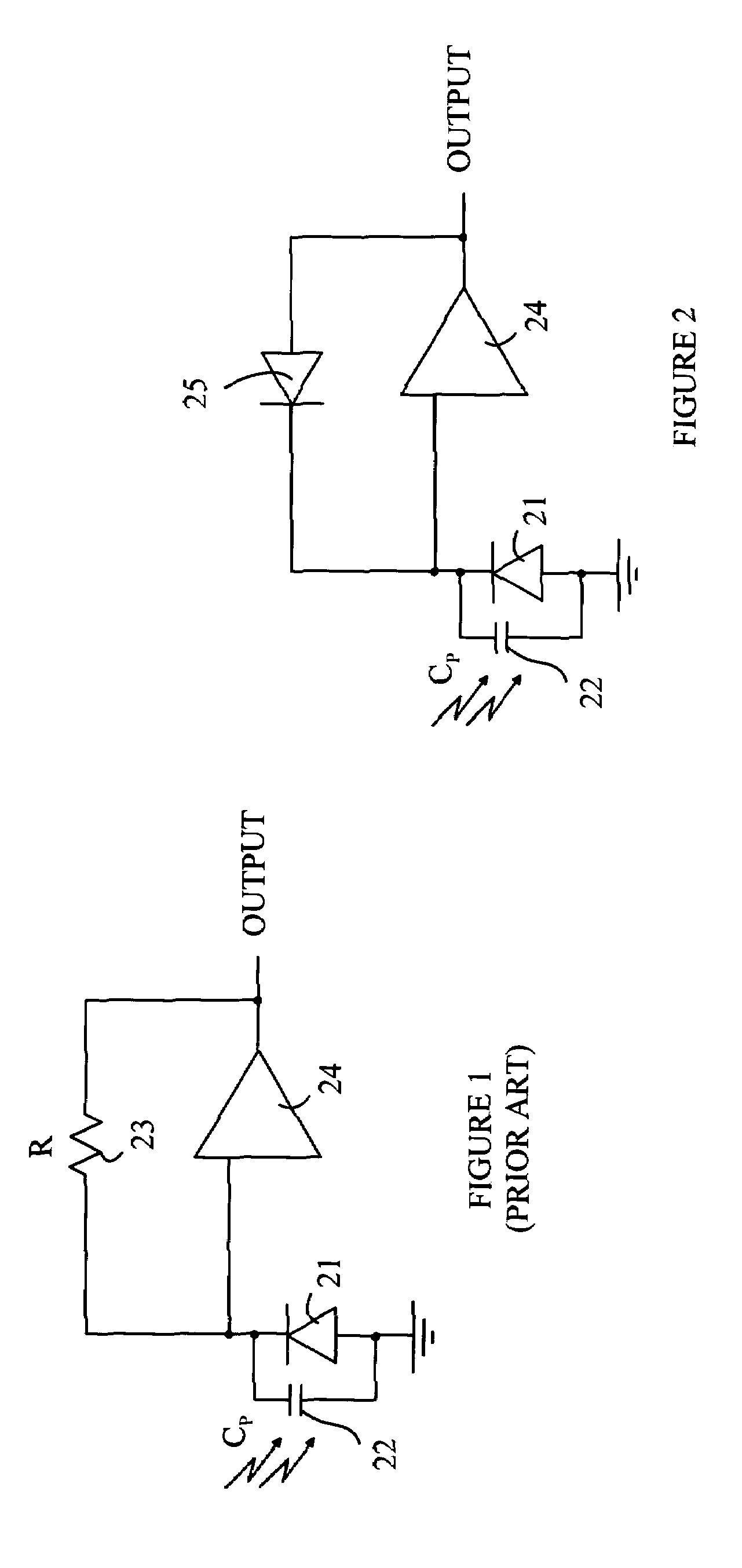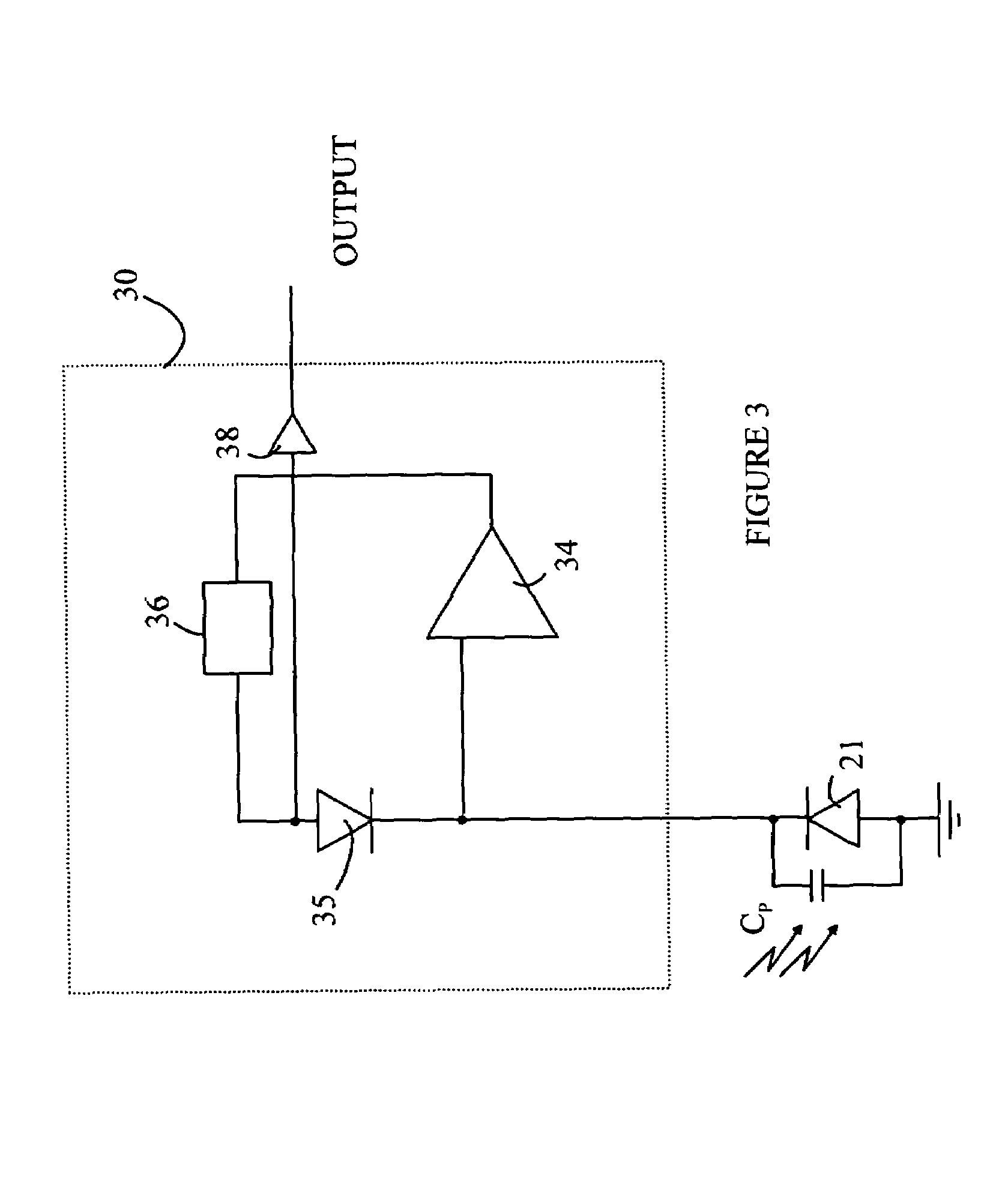High dynamic range optical receiver
a high-dynamic range, optical receiver technology, applied in the direction of amplifiers, transmission, speed/acceleration/shock measurement devices, etc., can solve the problem of insufficient sensitivity of the circuitry at the lowest light level, inability to provide an output signal proportional to the intensity of light in these situations, and many circuit elements have intrinsic noise that overwhelms very small signals
- Summary
- Abstract
- Description
- Claims
- Application Information
AI Technical Summary
Benefits of technology
Problems solved by technology
Method used
Image
Examples
Embodiment Construction
[0012]The manner in which the present invention provides its advantages can be more easily understood with reference to FIG. 1, which is a prior art schematic diagram of a photodiode connected to a conventional TIA. When photodiode 21 is illuminated, a current flows through photodiode 21 and the output of amplifier 24 increases until the same amount of current flows through feedback resistor 23. There is a maximum output voltage that the amplifier can provide. If the feedback resistor is set to provide this output voltage for the highest anticipated value of the photocurrent in photodiode 21, then the sensitivity of the circuit at very low light levels can be insufficient for many applications. Conversely, if the resistance is set at a value that provides high sensitivity at low light levels, the amplifier will saturate at higher levels.
[0013]In principle, this problem can be overcome by replacing resistor 23 with a circuit that changes impedance as the photocurrent changes. The imp...
PUM
 Login to View More
Login to View More Abstract
Description
Claims
Application Information
 Login to View More
Login to View More - R&D
- Intellectual Property
- Life Sciences
- Materials
- Tech Scout
- Unparalleled Data Quality
- Higher Quality Content
- 60% Fewer Hallucinations
Browse by: Latest US Patents, China's latest patents, Technical Efficacy Thesaurus, Application Domain, Technology Topic, Popular Technical Reports.
© 2025 PatSnap. All rights reserved.Legal|Privacy policy|Modern Slavery Act Transparency Statement|Sitemap|About US| Contact US: help@patsnap.com



